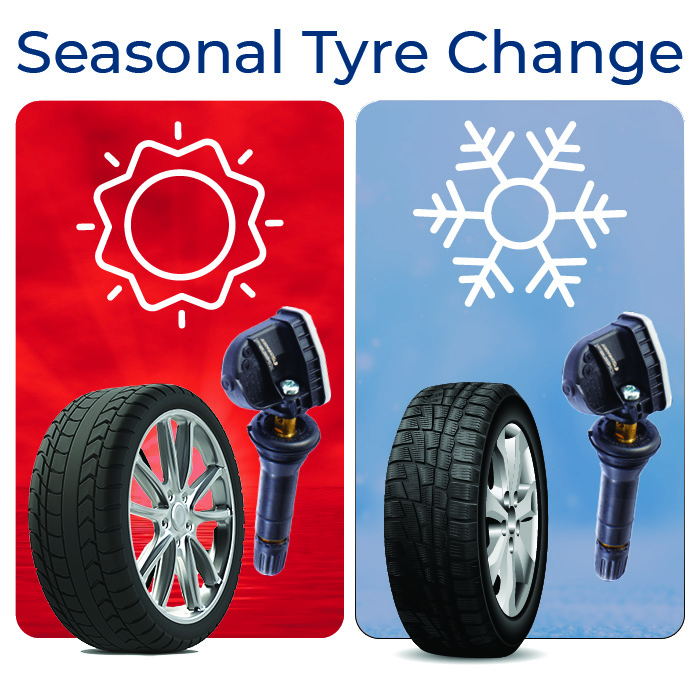
How to sell TPMS with seasonal tyres
A seasonal tyre change is very important for driver safety and despite the increasing popularity of all-season tyres, Schrader strongly recommends changing to summer tyres once the temperature levels are above 7°C and then back to winter tyres when the temperature drops below 0°C.
Seasonal tyre change might raise some questions by the driver and sometimes complaints due to increased service costs; however, it is your responsibility to explain to customers the benefits of seasonal tyres and give proper guidance on service and storage. We have summarized a few easy responses that can flip the coin and result in much more positive customer experience.
Why choose seasonal tyres over all-season tyres?
The answer is simple - unlike all-season tyres, seasonal tyres are designed for optimal performance in specific weather conditions. For example, summer tyres are specifically designed for optimal driving performance in warmer weather, this can mean higher grip levels on wet and dry roads thanks to special tread patterns and compounds. Whereas winter tyres are developed to ensure peak performance in inclement weather conditions, including superior traction and braking distance. Winter tyres are also formulated to produce grip at low temperatures! Numerous tests have shown that seasonal tires outperform all-season tires in any given weather conditions such as rain, snow and ice by providing higher handling, grip levels, and traction.
Why must TPMS be serviced at each tyre change?
Customers must keep in mind that without ensuring proper air pressure and temperature, tyres are unable to perform to their maximum capabilities. Even if they switch to seasonal tyres, without a fully functioning TPMS system, tyres cannot guarantee maximum safety and performance. Apart from the safety aspect, a well-functioning TPMS also significantly reduces fuel consumption and CO2 emissions.
How do they store TPMS sensors and seasonal tyres?
When changing seasonal tyres, there are few things that you need to keep in mind in relation to TPMS:
- When installing a brand-new set of wheels, you can transfer the existing TPMS sensors to the new set; however, to avoid premature failure of the tyre pressure monitoring sensors, make sure to replace the service kit of the existing TPMS sensor with a new one during each tyre replacement.
- Check the battery status of the TPMS sensors with a proper diagnostic tool. Pay attention to any errors and do a visual inspection of the sensors.
- While storing or advising customers to store the tyres for next year, always make sure to clean them. This will help avoid harmful environmental effects on the TPMS sensors that dirt can cause, such as corrosion, material deterioration, etc.
And remember, having properly functioning TPMS can make a lifesaving difference in a driver’s daily commute.
Written by Mariam Lochoshvili, Marketing and Communications Manager EMEA
